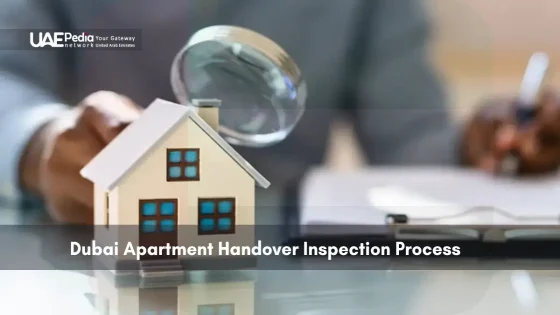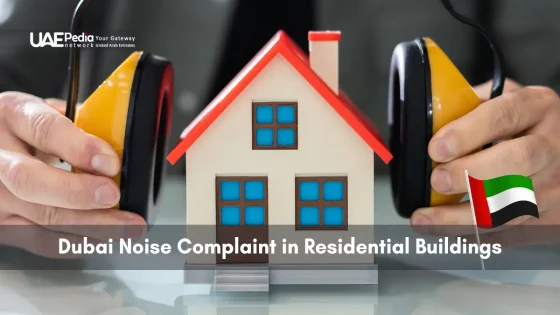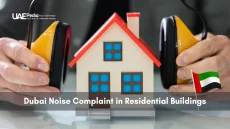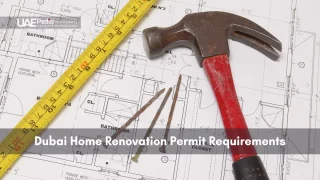Over 80% of new homeowners in the UAE’s vibrant cities encounter unexpected surprises during their property transfer—but what if you could sidestep those hurdles? This phase marks more than paperwork: it’s your gateway to turning keys into lasting memories.
When developers issue a completion notice, the clock starts ticking. This document unlocks your right to assess every detail, from floor tiles to electrical outlets. Think of it as your golden ticket to ensure your investment shines as brightly as the desert sun.
Local experts call this the “snagging” phase—a meticulous review to catch imperfections before ownership becomes official. It’s not just about spotting cracks; it’s about safeguarding your vision of home in a region where innovation meets tradition.
We’ve walked this path with countless buyers, decoding technical jargon and bureaucratic steps into plain language. Our approach? Treat every light switch test and balcony inspection like a treasure hunt, where diligence today prevents headaches tomorrow.
Here’s what you’ll master in this guide:
- Why that completion notice matters more than you’d guess
- How to transform complex checklists into actionable wins
- Proven strategies from residents who’ve perfected their move-in day
Understanding the dubai apartment handover inspection process
Imagine stepping into your new home only to find hidden flaws—avoid this with a smart property snagging strategy. This behind-the-scenes journey transforms complex steps into clear victories, whether you’re a first-time buyer or repeat investor.
Breaking Down the Journey
The handover process unfolds in three acts. First comes the discovery phase—examining every corner like a detective. Next, documentation turns findings into actionable lists. Finally, resolution ensures fixes align with your vision.
| Phase | Focus Area | Typical Timeline |
|---|---|---|
| Initial Review | Surface defects & fittings | 1-3 days |
| Systems Check | Electrical, plumbing, HVAC | 2-5 days |
| Final Resolution | Developer negotiations | 7-14 days |
Why Precision Pays Off
Thorough snagging isn’t just about spotting chipped paint. It’s your shield against future headaches. One client discovered reversed hot/cold taps during their review—a quick fix that prevented months of annoyance.
Engaging the Dubai Land Department ensures everyone plays by the rules. Their guidelines give you leverage when requesting repairs. Most developers must address issues within 14 days—knowing this timeline keeps progress on track.
Consider this: 92% of resolved snagging items never resurface. That’s the power of detailed checklists and photographic evidence. Your future self will thank you for those extra hours spent scrutinizing cabinet hinges.
Pre-Handover Preparations for a Smooth Transition
Picture this: your future home awaits, but the real magic happens before you cross that threshold. Smart preparation transforms chaotic moving days into a well-choreographed dance between you and the developer’s team.
Scheduling Like a Pro
That completion notice isn’t just paper—it’s your starter pistol. Contact the developer within 48 hours to lock inspection dates. Pro tip: Book morning slots when eyes catch sunlight-revealed details. Bring a friend for second opinions on cabinet finishes or balcony railings.
Paperwork Power Moves
Your essentials kit should include:
- Signed purchase agreements (triple-check page numbers)
- Bank statements showing cleared fees
- Government-issued ID with matching signatures
One buyer we know color-coded folders—red for contracts, blue for receipts. Overkill? Maybe. But when her developer questioned a payment date, she flashed the proof instantly.
Confirm every step via email. Verbal promises vanish faster than desert mirages. Save screenshots of deadline reminders too—they’re golden during timeline debates.
Remember: thorough prep isn’t about distrust. It’s about starting your new chapter with confidence, knowing every switch works and every document tells your story.
Step-by-Step Guide Through Inspection and Snagging
What if your final walkthrough became a victory lap instead of a scavenger hunt? This phase transforms anxiety into confidence when approached with a game plan sharper than a Bedouin’s coffee grinds.
Identifying and Documenting Property Issues
Start your detective work armed with three tools: a bright flashlight, your phone’s camera, and a digital notepad. Move clockwise through each room, testing every switch and faucet like you’re auditioning them for a starring role. Common defects often hide in plain sight—sticky cabinet doors, uneven tile grout, or AC vents blowing lukewarm air.
Snap photos from multiple angles, zooming in on imperfections. One property owner we know created a color-coded spreadsheet: red for urgent fixes, yellow for cosmetic tweaks. “That visual system made negotiations feel like solving a puzzle,” they later shared.
Addressing Snagging Concerns with the Developer
Schedule your post-inspection meeting within 48 hours—fresh details stay crisp in everyone’s memory. Present findings as collaborative solutions rather than complaints. Try phrasing like: “We noticed the balcony door alignment could use adjustment—when’s convenient for your team to address this?”
Developers typically provide a resolution timeline. Track progress through their portal and weekly check-in calls. Remember: documented evidence turns “he said/she said” into clear action steps. We’ve seen properly recorded condition reports slash resolution times by 60%.
“Bringing printed photos to our meeting changed everything. The site manager immediately understood the bathroom tile mismatch we’d struggled to describe.”
Close the loop by re-inspecting fixes before signing off. This final make sure step transforms stress into satisfaction—you’ve just turned snags into success stories.
Managing Financial Obligations and Legal Formalities
Think of your financial readiness as the golden key to your front door—it unlocks smooth transitions and keeps surprises at bay. We’ve seen smart buyers transform this phase from spreadsheet stress into strategic confidence.
Clearing Payments and Understanding Fees
Your final payment checklist should sparkle like Gulf waters at noon. Expect:
- Oqood fees (4% of property price)
- Title deed charges (AED 4,000 + 0.5% administration fee)
- Service charges (annual cost averaging AED 12-35 per sqft)
Pro tip: Treat AED transactions like desert navigation—track every dirham. One buyer saved AED 8,000 by challenging incorrect maintenance fee calculations. Keep digital receipts in cloud folders named by date and purpose.
Registration, Title Deed, and Utility Setup
The Dubai Land Department becomes your paperwork partner here. Their portal streamlines registration, but double-check these:
- Developer NOC clearance
- Ejari rental system enrollment (for leasing)
- DEWA deposit payments (AED 2,000-5,000)
“Comparing service charges to my coffee budget changed everything—AED 300 monthly isn’t just numbers, it’s 60 flat whites protecting my investment.”
Most property management teams handle utility transfers if you provide meter readings during inspection. Schedule these setups 10 days before move-in—your future self will relish having AC humming on arrival day.
Finalizing Your New Home Ownership Experience
That satisfying click of your front door isn’t just sound—it’s freedom. You’ve navigated from initial walkthroughs to final completion checks like a pro. Now comes the sweetest chapter: making those empty rooms echo with your story.
At your concluding meeting, triple-verify that real estate paperwork mirrors every agreement. If managing tenant relationships or rent details, ensure all deposits and contracts align with local regulations. One recent buyer celebrated by framing their title deed—a tangible reminder of their desert-to-doorstep journey.
Before declaring victory, do a sunset sweep. Test every lock, faucet, and switch one last time. Confirm repair timelines in writing if any fixes remain. Then? Change those locks and introduce yourself to neighbors—it’s how many lifelong friendships begin here.
Keep your document folder handy for the first month. Review sale agreements against actual services received. Found discrepancies? Address them promptly through official channels. Remember: thoroughness today means peaceful mornings sipping karak chai tomorrow.
You’ve earned this moment. Host a simple housewarming—even if it’s just you and the view. Every home becomes magical when its owner steps into their power. For future adventures in real estate, we’ll keep the light on at uaepedia.net.
Developers are legally required to address snagging issues within 12 months of handover. Document everything with photos/videos, submit a formal snagging list, and follow up until repairs meet Dubai Land Department standards. Many buyers hire professional inspectors for unbiased reports.
You can delay acceptance if major defects impact safety or livability. For minor issues, negotiate a written agreement with the developer outlining repair timelines. Always consult a real estate lawyer before taking this step to avoid contractual breaches.
Service charges are set by Dubai’s Real Estate Regulatory Agency (RERA) based on property type and size. While non-negotiable, review the breakdown for accuracy. Charges cover maintenance, security, and amenities—ensure they align with what’s promised in your sales agreement.
Typically 30–60 days after completing payments and submitting documents like the completion notice, Emirates ID, and No-Objection Certificate. Use the DLD app to track progress. Delays often stem from unpaid fees or developer administrative hiccups.
Bring your passport copy, sales agreement, payment receipts, and a pre-made snagging checklist. Developers might also request NOC letters from banks if you have a mortgage. Keep digital backups—some communities like DAMAC Properties use app-based submission systems.
Developers usually initiate water/electricity accounts, but you’ll need to transfer them to your name via DEWA’s app or service centers. Budget for a security deposit (AED 2,000–4,000) and setup fees. Delays here can affect move-in dates, so start early!



















